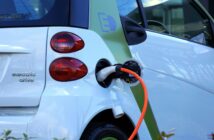The equivalent of modern-day power stations, Renewable Energy Zones (REZs) are geographic areas with high-quality variable renewable energy resources

Successful delivery of REZs will be imperative to Australia transitioning its energy system and achieving its net zero goals.
However, the scale of energy generation required is so large that onshore REZs alone cannot provide the silver bullet – assistance will be required from Australia’s copious offshore wind resources and coordination through offshore REZs.
Offshore Renewable Energy Zones: What are they and how do they work?
Through the development of Offshore Renewable Energy Zones (O-REZs), significant planning is currently underway for the delivery and coordination of large wind turbines generating energy across Australia’s oceans.
O-REZs, like their onshore counterparts, will be pioneering from a regulatory standpoint and will require sustained collaboration between government and industry to be successfully delivered.
O-REZs are regions assessed by the Federal Government as ‘having significant potential for the generation of renewable energy’.
O-REZs must be located in the Commonwealth offshore area, which is any area beyond State and Territory waters – three nautical miles off the coast –and within Australia’s Exclusive Economic Zone – extending from 12 to 200 nautical miles off the coast.
Key strategic and geographical considerations are taken into account when declaring an O-REZ including the speed, strength, and consistency of wind, the depth of the ocean, the proximity to delivery requirements such as transmission infrastructure and labour, proximity to ports, and distance from environmentally sensitive areas or major shipping channels.
Once a suitable area is identified, O-REZs are confirmed under the Offshore Electricity Infrastructure Act 2021 (Cth) and declared by the Federal Minister for Energy.
Unlike onshore renewable energy that can be developed outside of a REZ, permissions for offshore energy infrastructure in Commonwealth waters cannot be sought for projects outside of a declared O-REZ. The granting of transmission and generation licences is not limited to declared areas.
This report refers to declared areas as ‘O-REZs’, in acknowledgement of their onshore counterparts. The term ‘Offshore Wind Zones’ is also commonly used. However, despite the specific reference to wind, no restrictions have been placed on what type of renewable energy projects may be licenced in these zones.
Where are they?
The Federal Government has made an official declaration of just one O-REZ to date – the Gippsland O-REZ – in the Bass Strait off Gippsland, Victoria, which is made up of three separate components, covering approximately 15,000 square kilometres and running from Lakes Entrance in the east to south of Wilsons Promontory in the west. The O-REZ was declared in December last year.
The Federal Government also issued a Notice of Proposal to Declare an Area in the Pacific Ocean off the Hunter region in NSW in August 2022.
Another four proposed locations have been announced for O-REZ investigation including the:
· Illawarra O-REZ off the coast of Wollongong, NSW
· Portland O-REZ off the coast of Portland, Victoria
· Bass Strait O-REZ off the coast of Northern Tasmania, and
· Bunbury O-REZ off the coast of South Western Australia.

Regulation of O-REZs and Offshore Project Infrastructure
To deliver these O-REZs and to regulate the infrastructure within them, there exists a collection of State and Commonwealth regulators.
Once an O-REZ has been declared by the Minister for Climate Change and Energy, project proponents are able to submit applications for feasibility and subsequently commercial licences to the Offshore Infrastructure Registrar.
The Registrar then manages the licence approval processes with the Minister. Once approved, the ongoing regulation of work health and safety, infrastructure integrity, and environmental management for all offshore infrastructure activity is transferred to the Offshore Infrastructure Regulator (OIR) – administered by the National Offshore Petroleum Safety and Environmental Management Authority (NOPSEMA).
Regulation and delivery of Transmission Infrastructure
Owing to the relevant infancy of the offshore wind industry in Australia, delivery of transmission infrastructure is not yet as defined as the delivery of generation infrastructure.
Broadly, project proponents are expected to deliver their own transmission infrastructure to a grid connection point operated by the O-REZs respective state transmission infrastructure provider. There is scope in the Offshore Electricity Infrastructure Act 2021 (Cth) for the Minister to direct proponents to provide a joint submission for infrastructure in the case of proximate or overlapping transmission plans.
Due to their more advanced O-REZ planning position, only VicGrid – the body responsible for delivery of Victoria’s Renewable Energy Zones – has provided plans to deliver grid connection points for O-REZs. The Victorian Government’s Offshore Wind Energy Implementation Statement 2, released in March, announced plans for connection points for both Gippsland and Portland O-REZs. VicGrid is currently considering whether these grid connection points will be located onshore or in state waters – within three nautical miles of the coast.
At the time of writing, plans for grid connection points in other states have not yet been announced. More details are expected following the declaration of further O-REZs.
Who is involved?
Whilst there has been extensive interest in the development of offshore wind, many projects remain in early planning stages – due in part to the newness of the industry and, until recently, the lack of regulation and legislation surrounding the industry. The Australia and New Zealand Infrastructure Pipeline (ANZIP) currently tracks 13 projects.
Of these projects, the Star of the South, located within the Gippsland O-REZ, is the most advanced, having secured Major Project status from the Federal Government following the declaration of the Gippsland O-REZ. The project’s scope includes a 496-square kilometre footprint and 2.2 gigawatts (GW) of generation capacity. Construction is expected to commence in 2025 and be completed by 2028.
Other projects currently in the pipeline include the Seadragon Offshore Wind Farm (1.5GW), Great Southern Offshore Wind Farm (one GW), and the Leeuwin Offshore Wind Farm (three GW). The quantity, scale and technology modes of offshore renewable energy projects is expected to increase as further O-REZs are declared.
Why go offshore?
The task ahead for project proponents, regulators, and governments alike for the successful delivery of O-REZs is large and will require a substantive amount of careful thought and application. This may lead people to querying why offshore energy generation is being pursued in the first place, when Australia has such an enormous landmass, a small population, and abundant onshore wind and solar resources.
Compared to onshore wind generation, offshore wind is advantaged by more consistent and stronger wind and less constraints on the scale of turbine generators. Currently, onshore wind turbines have an average generation capacity between three and four megawatts globally, while offshore turbines have an average capacity between eight and 12 megawatts, with the largest offshore turbine available on the market in 2021 having a capacity of 15 megawatts.
In addition, offshore wind projects can be located in areas with high energy generation capacity while being near to population and industry centres, and don’t face the same issues – such as overtaking of agricultural land or impact on potential urban development – that onshore renewable generation projects may face.
As outlined in the Australian Energy Market Operator’s 2022 Integrated System Plan, a colossal investment is required to achieve Australia’s net zero by 2050 commitment. Electricity consumption from the grid will double by 2050, requiring a nine-fold increase in grid-scale solar and wind from 16 GW to 141 GW. The scale of offshore wind’s generation capacity and Australia’s world-class offshore wind resources leaves the technology well placed to assist Australia achieve these aims.








